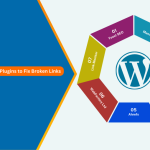What good is a towering pile of information if you cannot find results that are relevant to you? You may be a newbie in the eCommerce business, but you do know what it is like to shop from eCommerce Websites. If you did not have the patience to sift through categories to get to your desired product, don’t make the mistake of thinking that your customers would. This is why designing a responsive search feature is crucial for your website to succeed.
What Makes the Search Feature so Important?
Although catering to different people and businesses, eCommerce websites—B2B, B2C, and B2G– share one design-specific feature—the search bar. According to a tweet by Volusion- an ecommerce website store and shopping cart software, 60% of items bought are first searched online. This data proves how important it is to build a search feature in the eCommerce website design that elicits perfect responses based on customer inputs.

See How Our Experts Can Drive More Traffic to Your Website!
SEO: Boost your rankings and drive more organic traffic today!
Website Design/Development: Create a stunning website that converts visitors into customers.
Paid Media: Reach the right audience at the right time with expertly managed paid media.
Glossing Over eCommerce Websites
The three broad categories that eCommerce websites can be categorized into are.
-
-
B2B eCommerce
-
A B2B eCommerce Website is one where businesses provide services to other businesses, wholesalers, or retailers. For example, enterprise software that is sold to businesses comes under the B2B category.
-
-
B2C eCommerce
-
This is a direct form of transaction between a business and a consumer. Most retail websites come under the B2C category.
-
-
B2G eCommerce
-
This form of transaction occurs between a business and the government. Government institutions always hire contractors outside their organizations. An example of this mode of transaction would be a printing company that services government orders online.
Distinct Features of eCommerce Websites
As these three types of eCommerce businesses target different sections of society, their business models and website features also differ.
-
-
Package versus product-based categories
-
While B2G and B2B eCommerce features often put up customizable packages and schemes for their clients to choose from, B2C eCommerce websites device their categories by clubbing products sharing similar features under one tab.
For example, a B2B eCommerce SaaS company may segregate its categories based on packages with different features, while a B2C retail shopping website will put their product, say, ‘Men’s clothes’ under the category ‘apparel’.
-
-
Discounts on bulk orders
-
B2B and B2G transactions mostly comprise bulk purchases, which come with discounts tailored according to the features of each package. B2C websites generally do not offer discounts on bulk orders. Their discount schemes are based on national holidays and festivals when people tend to shop the most.
So, What Makes a Great Search Feature?
-
-
The magnifying glass symbol
-
Clichés exist because they work. The human mind responds to graphics more quickly than it does to text. In this case, the magnifying glass symbol is important as a user will immediately be able to identify it as a sign for the search field.
-
-
Keyword linking
-
Users who don’t know the name of the exact product they are looking for may type related words, known as keywords, into the search bar. Your website’s keyword game should be so strong that it displays all associated products in a drop-down list based on the words a user types into the search bar.
A product may be known by several names in different parts of the world. While feeding keywords to your website, make sure that you put in synonymous words for particular products.
-
-
Correct-spelling feedback
-
Take a page out of Google’s book, and make your search bar so responsive that it is able to identify the product a customer is looking for even if they enter keywords that are incorrectly spelled.
-
-
Auto-suggestions
-
Predictability is comforting. Be the website that has a reputation of being able to suggest products based on a few alphabets typed in by a user.
-
-
Sample text in search bars
-
Your job is made easier when you tell your customers how to enter keywords in the search bar of your website. Enter sample words in your search bar in a way that shows a user how they can get quick results when words are entered in a specific way. Make sure that the sample text disappears when users start typing.
-
-
Length of the text field
-
We have all encountered annoying text fields that hide words and make users navigate left and right to keep a track of the words they typed in. This increases the chances of typing repetitive words, making the search results go haywire.
Remember that people tend to never forget bad experiences. In the future, they will not visit a website that made them work hard.
-
-
A search bar that moves with the user
-
The search bar is not an accessory that adorns your website’s homepage. Make sure it appears on each page that a user navigates to. They should not have to go back to the home page each time they want to conduct a search.
-
-
Visibility and clarity
-
This is where website design comes into play. Resist the temptation of putting up too much information on your website. Make it minimalistic so that the search bar can be easily spotted.
Suppose that the background color of your website’s page is red. Your search bar will be lost if it is also colored in red. Give it a contrasting color and make it stand out.
-
-
The submit button
-
This button should look different from the rest of the clickable links on your website’s page. However, do not design it in such a way that it sticks out like a sore thumb. It should be in line with the design of the rest of the website.
-
-
Filters
-
Filters help to narrow down searches. Users searching for ‘women’s trousers’ will get thousands of results, but they will not browse through all the items that come up. Help them to look for specific trousers by letting them filter by color, price, fit, length, brand, and fabric.
Tip: Keep the search bar simple. You may think that having an advanced search option may be a great idea, but users often find it tedious and a waste of time.
Mobile Versus Desktop Searching
With the advent of smartphones, online activity has increased in leaps and bounds. People have not tied to their desktops and laptops anymore and can easily get their hands on products and services using their smartphones. Therefore, many eCommerce websites have launched apps with intelligent search features so that customers can easily access the services offered by them. This is a win-win situation where businesses simply convert their desktop engagement into a mobile engagement.
Mobile searches are mostly done when people are out and want to know where the nearest hotel, store, restaurant, or gas station is. When these types of searches are conducted, there is a good chance that.
- your user is nearby and is looking for the exact location of your store.
- your user is looking for something in particular. In scenarios like this, it is important that your website is able to predict a number of things that the user may be looking for and generate results accordingly.
But what about the brands that do not have apps? What can they do to not lose their clients?
Tip: Make sure that your website is adaptive so that it can fit any screen size without compromising on the user experience. Your users should find searching for something on your website using their smartphones as easy as conducting a search using their desktops.
This however does not mean that desktop search is becoming obsolete. A student making notes for an English exam will most likely use their desktop to read articles. Older people who are not very tech-savvy will use their desktops to look for products online. So the trick is to pay attention to the needs of both your mobile and desktop users.
Things to Check for Before Making Your Website Live
Any good website designer will test a new website’s features against an eCommerce website testing checklist. Here are a few steps to follow when testing the search feature of your website:
-
-
Test for confusing input
-
Imagine that someone is looking for ‘wall plates’. Your website should not yield results of plates that people eat off. It should load products that are decorative wall plates that people actually put up on their walls.
-
-
Test the submit button
-
Your website should not start yielding results until the user clicks on the submit button. On the other hand, make sure that your user also has the option to click enter to trigger the search action.
-
-
Check the search results
-
1. If you designed your website to load a set number of products on each page, test if it is loading more or less than that number.
2. Test the pagination. Click on the page numbers to see if you are landing on that particular page.
3. Check if the searched words are highlighted in the results.
4. Check if each product is named and described briefly.
5. Check if a proper response is displayed on the screen if the search yields no results.
-
-
Test if the user-entered text is deleted after the submit button is hit
-
Do not delete the text a user enters to search items even when their search has generated results. They might want to slightly alter their input for a new search, and typing all over again would be cumbersome.
You Can Achieve These Results Using Magento
Businesses that use a professional Magento 2 web design company to have their websites designed do not have to worry about adaptivity as Magento developers are extremely skilled at identifying each brand’s needs. Here is what you need to know about Magento.
3dcart is an all-inclusive eCommerce website builder. While Magento is a customizable and open-source eCommerce website builder. Currently, it has two versions—the Magento community edition and the Magento enterprise edition. While the former can be used for free, one has to pay to use the Magento enterprise edition. With support extending beyond the design of a website, ecommerce development experts assist both small and large businesses to enrich their customers’ experience in every conceivable way.
-
-
Establishing a global presence
-
When you feel confident about taking the next step and expanding your business from a local to a global one, Magneto will help you to launch an international website while you sit back and relax.
-
-
Staying up-to-date
-
The trends of eCommerce websites are always evolving. If you can’t change with the times, your business will fall through the cracks. This is where Magneto steps in to make your website capable of meeting ever-changing customer demands.
-
-
Cross-channelling
-
It is not enough anymore to simply build a website and push it live for people to access. It has to be constantly nurtured and your business needs to be present to customers in every way possible. If your desktop site loads like a nightmare on smartphones, your business will lose valuable patronage.
The Magento platform provides tools that can help you build great search functionality on your website. With a great user interface built using Magento, let your website make a statement and stand out in the crowd. Hire the right eCommerce website development services provider to get you started now.






